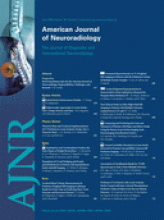Abstract
BACKGROUND AND PURPOSE: Higher magnetic field strengths and continuous improvement of high-resolution imaging in multiple sclerosis (MS) are expected to provide unique in-vivo and non-invasive insights in pathogenesis and clinical monitoring. The purpose of this study was to investigate the potential of high-resolution imaging of MS lesions in vivo comparing 7T with conventional 1.5T.
MATERIALS AND METHODS: Twelve consecutive patients with clinically definite MS were scanned on a 7T whole-body scanner and on a 1.5T Avanto. The 1.5T and 7T imaging protocol consisted of high-resolution axial proton density (PD) + T2-weighted turbo spin-echo and T2*-weighted gradient-echo (GRE), and sagittal T1-weighted 3D magnetization-prepared rapid acquisition of gradient echo.
RESULTS: The sequence parameters at 7T had to be modified because of specific absorption rate (SAR) restrictions while keeping contrast parameters equivalent to 1.5T. White matter lesions were better detected and delineated from adjacent structures at 7T compared with 1.5T. There were 42% of the patients who showed additional lesions at 7T: there were 97 white matter lesions detected on 1.5T versus 126 lesions at 7T, an increase of 23%. The perivascular migration of MS lesions was well visualized on T2*-weighted GRE sequences. In larger lesions (10 mm), a multilayer structure was revealed on T2*-weighted GRE not seen at 1.5T. Because of the higher resolution, it was possible to differentiate between juxtacortical white matter lesions and cortical lesions. There were 44% of the subcortical lesions depicted at 7T that showed cortical involvement.
CONCLUSIONS: Ultra-high-field imaging of patients with MS at 7T was well tolerated and provided better visualization of MS lesions in the gray matter and demonstrated structural abnormalities within the MS lesions themselves more effectively.
- Copyright © American Society of Neuroradiology












